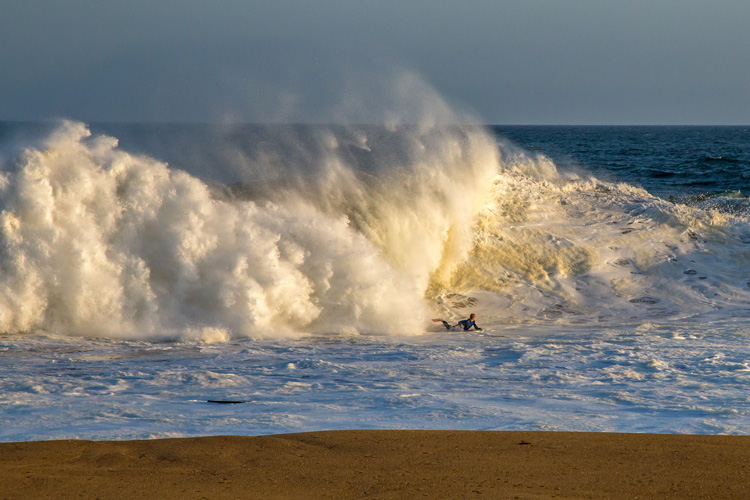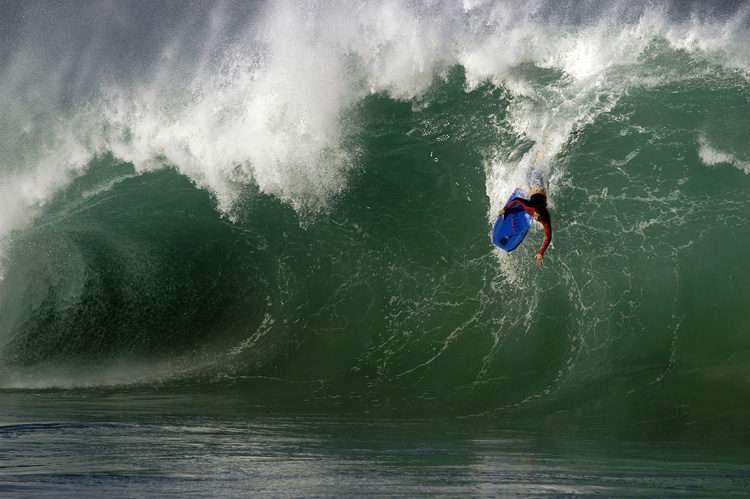Hats off to bodyboarders. Sometimes, surfers have to acknowledge that they're not on the same level as prone riders.
I live and work in a place where there are waves for everyone - boys and girls, men and women, beginners and pros can get what they seek within less than five miles.
We're talking about a European region blessed by regular northwest North Atlantic swells, piers, beach orientation rules, the quality of the surf break, and, in most cases, the size of the waves these spots traditionally produce.
One of the reasons why (some) surfers (still) hate bodyboarders is because boogie boarders ride anything - even a closeout wave.
Fortunately, times are changing, and the oldest and fiercest rivalry in the history of boardsports is fading away.
For those who are still stuck in the past, I suggest they visit a swell-exposed break on a day when the majority of boards and surfers you'll see are in the parking lot.
When Hurricane Ophelia hit Europe in October 2017, and despite the roaring winds that invaded the coastal regions, I decided to walk along the beach to observe the stirred seas.
I was not expecting to see anything but a stormy ocean. The buoys were indicating waves in the 10-to-15-foot range, but, as always near me, it was definitely bigger than the forecast.
After a couple of minutes of constant, brutal closeouts, I spotted something moving with the heavy currents.
It was a human being. But what was he doing in the middle of a chaotic and life-threatening lineup?
Apparently, he was bodyboarding. And he was not alone. In a matter of seconds, I could spot a second, third, and fourth gladiator.

A Different Mindset
I thought, "These guys are risking their lives. It's big and scary out there. How can they not be afraid of being in the water with these conditions? How can they duck-dive a wave if they get caught inside? How can they ride a single wave?"
The answer arrived soon enough.
As I was battling the storm-force winds, protecting my right ear from what had recently sent me to the surgery room, I saw a pair of fins kicking hard and a wave rider being thrown into a massive, cavernous black wave.
Yes, that was a bodyboarder "enjoying" a brutal assault and sucking the energy of a thunderous product of Mother Nature. Were there any surfers looking over the ledge? Not a single one.
I am a surfer, and I usually tell my bodyboarder friends that I can't bodyboard.
Because I truly can't.
It's definitely harder than surfing and requires a new dimension of skills that you cannot master in a couple of days.
I honestly understand why people prefer bodyboarding to surfing and why stand-up wave riding does not necessarily mean more fun, status, and style.
There's a dimension to it that we, surfers, have never quite understood.
The simple act of trimming the wave and finding the ideal surf line is not something you can learn in a seven-day summer surf trip.
Many times, bodyboarding is the art of riding waves that were purposely left behind.
And on that particular day, I waited for them to finish their session. I wanted to look at their faces and confirm they were not a product of my imagination.
This is a stoked surfer's tribute to bodyboarding and bodyboarders. Without your inspiration, we would not be chasing and pushing the limits of impossibility.
Words by Luís MP | Founder of SurferToday.com
